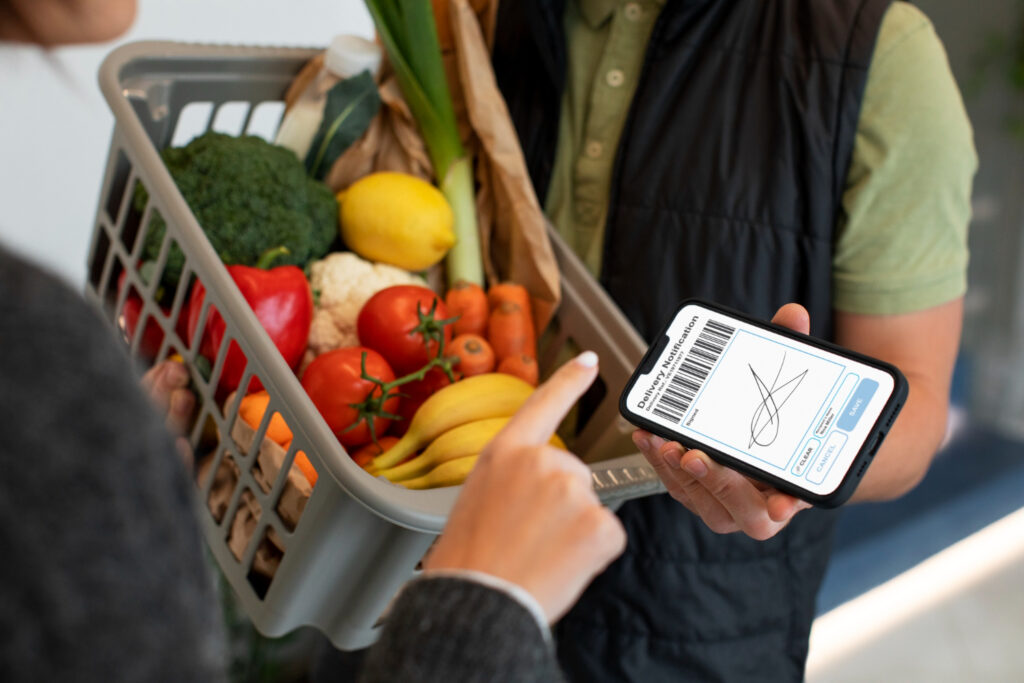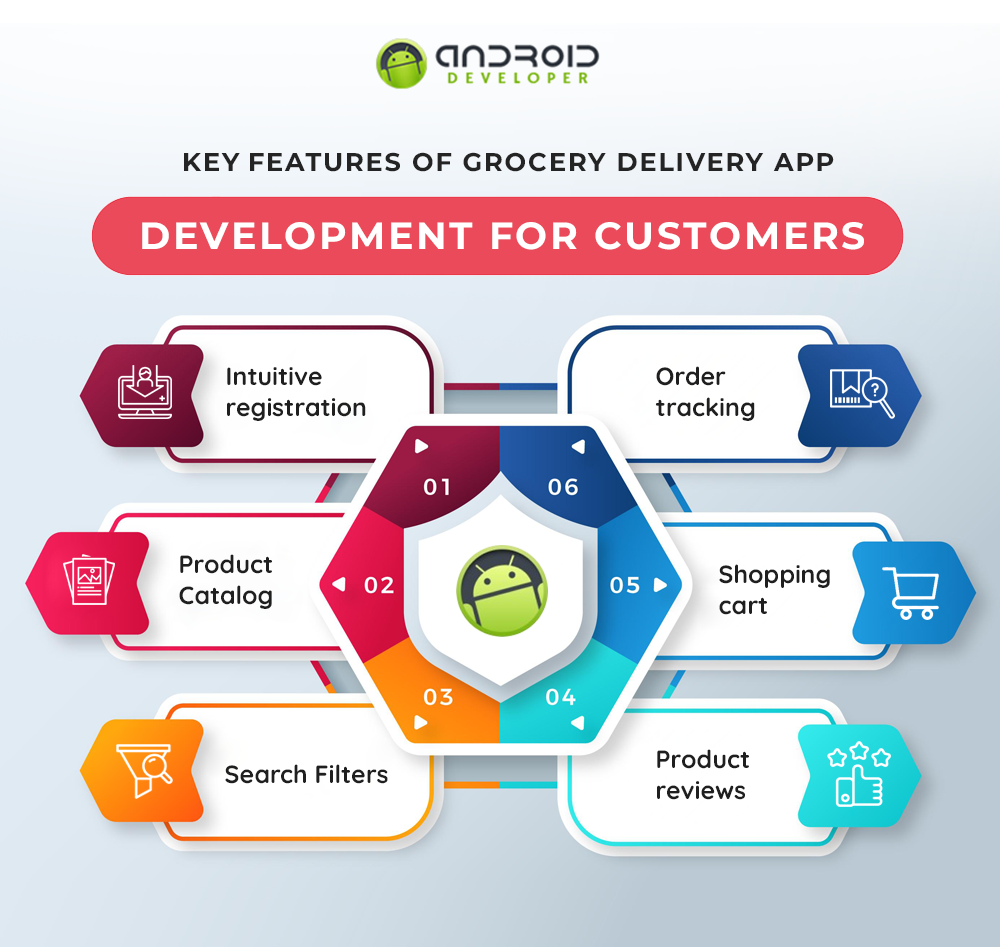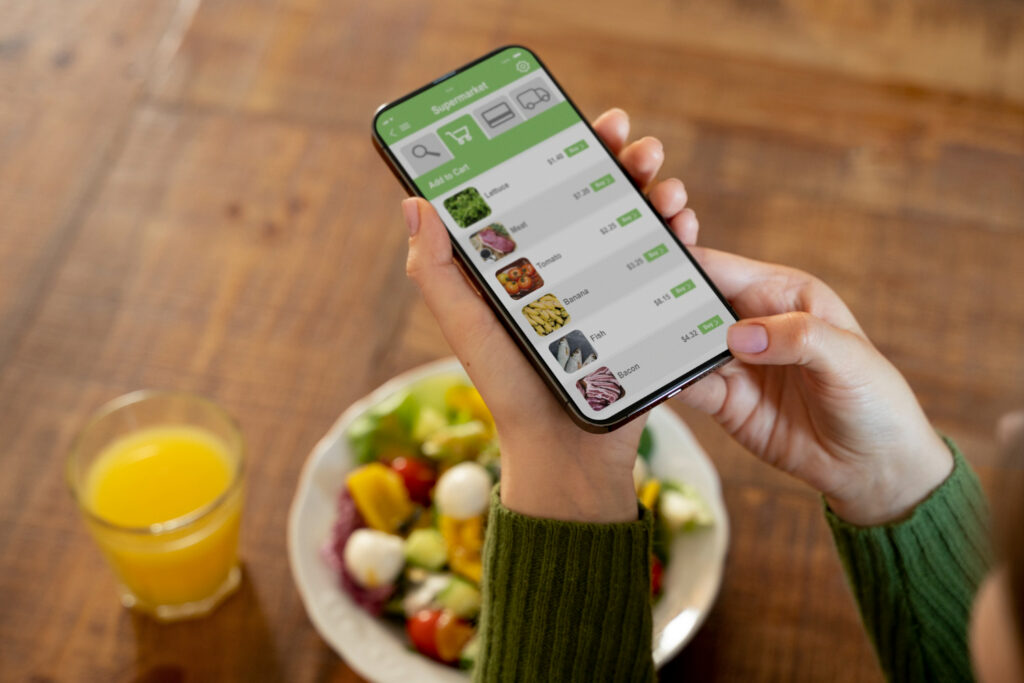Grocery App Development: Transforming How We Shop
In today’s digital-first world, mobile apps are reshaping industries, and grocery shopping is no exception. Grocery app development is a rapidly growing field, meeting demand for on-demand services, personalized experiences, and the convenience of online shopping. To stand out in the competitive landscape, a grocery app must go beyond simple transactions; it must foster meaningful customer connections, streamline operations, and offer intelligent recommendations.
For businesses looking to innovate in the grocery space, partnering with a reliable software development company offers a comprehensive approach to creating high-performing grocery apps. With over 15 years of experience, Savvycom combines technological expertise with an understanding of user behavior to deliver robust, scalable grocery app solutions.
Understanding Grocery App Development
Grocery app development refers to the process of designing, building, and deploying mobile applications that facilitate the purchase, delivery, and management of grocery items. These apps are tailored to meet the specific needs of grocery retailers and consumers, providing features such as product catalogs, digital payments, order tracking, and personalized recommendations. By integrating cutting-edge technologies like artificial intelligence, cloud computing, and data analytics, grocery app development creates a seamless, intuitive shopping experience that enhances customer engagement and drives sales.
At its core, grocery app development aims to simplify the entire shopping process—from browsing and ordering to payment and delivery, by leveraging digital tools that reduce friction and improve efficiency. For instance, research from Deloitte reveals that mobile commerce can increase sales conversion rates by up to 30% when backed by a well-designed mobile application

High demand of grocery app
Market Demand for Grocery Apps
The rise of eCommerce and a preference for convenience have boosted demand for grocery apps. In 2021, online grocery sales in the U.S. alone reached over $100 billion, a figure that continues to grow, according to the EMarketer reports. Demand for grocery app services has expanded beyond urban centers to suburban and rural areas. Shoppers value:
- Convenience: Quick and easy access to grocery items without visiting physical stores.
- Personalization: Curated recommendations based on past purchases.
- Delivery options: The ability to select between home delivery, curbside pickup, or in-store pickup.
The statistics show that grocery apps offer significant ROI for businesses by attracting users who are loyal and willing to pay a premium for convenience. Creating a grocery app that stands out means delivering on these core user expectations.
What Drives the Need for Grocery App Development?
- The Rising Demand for Convenience: Grocery apps provide customers with the ability to order groceries from anywhere, anytime, saving valuable time and reducing in-store wait times. As e-commerce’s convenience factor drives new behavior, app-based grocery shopping is forecasted to grow at a 7.83% CAGR through 2029, according to Statista.
- Growing Competitive Landscape: With major players like Instacart, Amazon Fresh, and Walmart investing in sophisticated grocery apps, it’s becoming essential for both startups and traditional retailers to adopt similar strategies. An optimized app not only helps retain customers but also meets their growing expectations for quick delivery, personalized recommendations, and secure payment options.
Key Features for Grocery Apps
Successful grocery app development relies on incorporating features that align with user needs and market expectations. Here’s a breakdown of essential features:

Source: Android Developer
Real-Time Data Integration and Analytics
One of the most critical features of grocery app development is real-time data integration. Modern grocery apps aggregate data from multiple sources, inventory systems, payment gateways, and user interactions, to provide a live snapshot of store performance and customer behavior. Real-time dashboards enable retailers to monitor sales, manage stock levels, and adjust promotions dynamically.
For example, an electronics retailer integrated real-time analytics into its grocery app, which resulted in a 20% improvement in inventory turnover and a 15% reduction in out-of-stock incidents (Forrester). Such data-driven insights help in making swift, informed decisions that directly boost operational efficiency.
AI-Driven Personalization and Recommendations
Artificial intelligence is revolutionizing grocery app development by enabling personalized shopping experiences. Advanced algorithms analyze past purchase history, browsing behavior, and customer demographics to offer tailored product recommendations. This not only increases conversion rates but also enhances customer loyalty by creating a more engaging, relevant shopping experience.
Seamless Omni-Channel Integration
Modern consumers expect a seamless shopping experience whether they are shopping online, on mobile, or in-store. Grocery app development now focuses on delivering an omni-channel experience, ensuring that all digital touchpoints are integrated. This means that the app not only connects with the retailer’s website but also integrates with physical store systems such as point-of-sale (POS) and inventory management systems.
Enhanced Security and Payment Processing
Security is paramount in grocery app development as these applications handle sensitive customer data and payment information. Advanced encryption, secure payment gateways, and compliance with standards like PCI DSS are critical features. Robust security measures build customer trust and protect against data breaches.
User-Centric Design and Intuitive Interfaces
A key differentiator for successful grocery app development is a user-centric design that ensures a seamless and engaging customer experience. Intuitive interfaces, easy navigation, and quick loading times are critical to encouraging frequent use and minimizing cart abandonment rates. With mobile commerce set to account for a significant portion of online sales, recent estimates project that mobile commerce will account for 59% of all retail eCommerce sales, generating approximately $4.01 trillion in revenue by 2025 (Sellers Commerce), the design of grocery apps becomes a crucial factor in customer retention.
Get in touch with Savvycom for a free consultation. We’ll help you decide on next steps, explain how the development process is organized, and provide you with a free project estimate.
Future Trends in Grocery App Development
1. AI-Driven Personalization and Predictive Analytics
The future of grocery app development will be driven by AI and machine learning, enabling personalized shopping experiences and predictive analytics. AI algorithms can analyze customer behavior to offer tailored product recommendations and optimize inventory management, potentially increasing conversion rates by up to 20%.
2. Enhanced Mobile Commerce Solutions
As mobile commerce continues to grow, grocery apps will become more mobile-centric, offering seamless, user-friendly experiences on smartphones and tablets. According to Statista, mobile commerce is expected to account for 72% of total online sales by 2025 (Statista). This trend will drive significant enhancements in user interface design and mobile functionality.
3. Integration of IoT for Real-Time Inventory Management
IoT devices will play an increasingly crucial role in grocery app development by providing real-time inventory data. The integration of IoT sensors and smart shelves will allow retailers to monitor stock levels continuously, reducing waste and ensuring optimal product availability. IDC research indicates that IoT integration can improve inventory accuracy by up to 30%.
4. Cloud-Based and Edge Computing Solutions
Cloud and edge computing will continue to transform grocery apps by enabling scalable, cost-effective solutions that offer real-time data processing and reduced latency. These technologies will support robust analytics and seamless integration with other digital platforms, driving overall efficiency.
5. Advanced Security and Data Privacy Measures
With increasing concerns about data breaches, future grocery app development will emphasize enhanced security protocols. Advanced encryption, secure payment gateways, and strict compliance with regulations like GDPR will be integral to protecting sensitive customer data, ensuring trust and long-term sustainability.
Addressing Challenges in Grocery App Development
Some challenges in grocery app development include managing large product catalogs, ensuring data security, and handling complex logistics for delivery and inventory. Here are some solutions:
- Efficient Catalog Management: AI-based cataloging and smart search functions improve accessibility and help users quickly find what they’re looking for.
- Data Security Compliance: Implementing PCI-DSS compliance and secure payment gateways ensure safe transactions and protect user data.
- Real-Time Tracking & Inventory Management: Using technologies like GPS and RFID ensures efficient delivery and inventory tracking, preventing stock-outs and improving transparency.
Anticipating these challenges and proactively addressing them is essential for building a grocery app that maintains user trust.
Case Studies
Case Study 1: Revolutionizing Grocery Retail for a Major Chain
Background:
A major retail chain was struggling with inefficiencies in its in-store operations and online ordering processes. The lack of a cohesive digital strategy led to long wait times and stock discrepancies.
Solution:
The chain invested in grocery app development to create a unified platform for online ordering, inventory management, and customer engagement. The app integrated seamlessly with their existing ERP system and used real-time analytics to optimize inventory levels and manage customer orders.
Results:
- 30% reduction in customer wait times.
- 25% improvement in inventory accuracy.
- 20% increase in online sales, leading to higher overall revenue.
This case demonstrates how a robust grocery app can drive significant improvements in operational efficiency and customer satisfaction, ultimately boosting sales and reducing costs.
Case Study 2: Enhancing Customer Engagement for a Regional Grocery Store
Background:
A regional grocery store chain aimed to improve customer engagement and streamline its ordering process to compete with larger national brands.
Solution:
The store implemented grocery app development to enable online ordering, digital payments, and personalized promotions. The app featured an intuitive user interface and real-time order tracking, which enhanced the shopping experience and fostered loyalty.
Results:
- 25% increase in customer engagement through personalized offers.
- 20% improvement in order accuracy.
- Significant reduction in manual processing costs by 15%.
Digital transformation through grocery app development enabled the regional chain to compete effectively by enhancing customer engagement and operational efficiency.
Case Study 3: Driving Efficiency in a Multi-Channel Grocery Operation
Background:
A multi-channel grocery operation faced challenges in synchronizing its online and offline channels, leading to inconsistent inventory data and fragmented customer experiences.
Solution:
The company adopted a comprehensive grocery app development strategy that integrated its brick-and-mortar operations with its online platform. The solution provided a unified view of inventory, real-time order updates, and automated customer notifications, ensuring a seamless shopping experience across all channels.
Results:
- 20% increase in overall operational efficiency.
- 15% reduction in stock discrepancies.
- Enhanced customer satisfaction, with a 10% boost in repeat purchase rates.
This case illustrates that integrating grocery app development into a multi-channel strategy can harmonize operations, reduce costs, and improve the customer experience
FAQs
How can grocery apps provide a competitive edge?
Grocery apps improve user experience by offering personalized recommendations, flexible delivery options, and streamlined payment processes. They can also increase customer retention through loyalty programs, offer targeted promotions based on buying behavior, and boost brand loyalty by consistently delivering value and convenience. Integrating with advanced tech, like AI for predictive purchasing, also gives companies a cutting edge in understanding customer needs.
What key technology integrations are needed for a grocery app?
Common integrations include payment gateways (e.g., PayPal, Stripe), real-time GPS tracking for delivery updates, AI-driven recommendation engines for personalized product suggestions, and inventory management systems to keep stock updated in real-time. For apps with complex needs, connecting with CRM systems or customer support chatbots helps manage customer relationships and streamline order handling.
How do I keep users engaged and coming back to my grocery app?
Engagement strategies include personalized offers based on buying history, push notifications for promotions or discounts, reward systems (e.g., loyalty points), and regular updates with new features. Adding social proof, like reviews or recommendations, and consistently enhancing the user experience (e.g., faster checkout, better search) can also foster long-term engagement.
For a more in-depth look into the development process and insights on grocery app cost, check out this related video:
Final Thoughts
Developing a grocery app offers a significant opportunity for grocery businesses to meet evolving customer expectations in today’s digital age. From streamlining operations to enhancing user experience through personalization and real-time updates, a grocery app can help businesses retain customers and drive growth. However, building an effective grocery app requires careful planning, choosing the right features, and working with a knowledgeable partner.
If you’re ready to enter the grocery market with a state-of-the-art mobile app, Savvycom offers the expertise and resources you need. With proven experience in creating scalable, user-centric solutions, our team helps businesses unlock the potential of grocery app development. Contact Savvycom today to learn how we can transform your ideas into reality.
Tech Consulting, End-to-End Product Development, Cloud & DevOps Service! Since 2009, Savvycom has been harnessing digital technologies for the benefit of businesses, mid and large enterprises, and startups across the variety of industries. We can help you to build high-quality software solutions and products as well as deliver a wide range of related professional services.
Savvycom is right where you need. Contact us now for further consultation:
- Phone: +84 24 3202 9222
- Hotline: +1 408 663 8600 (US); +612 8006 1349 (AUS); +84 32 675 2886 (VN)
- Email: [email protected]



